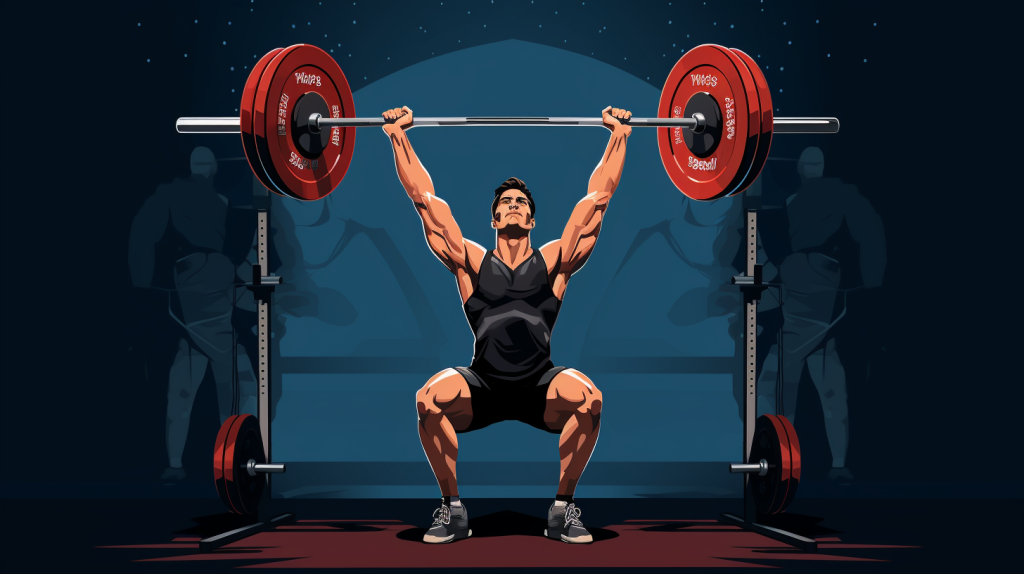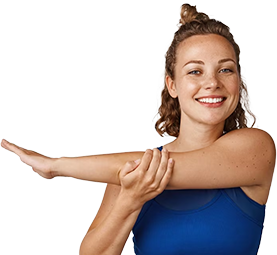Recent onderzoek heeft aangetoond dat de overhead squat geen groter effect heeft op de spieren van de romp dan de back squat (normale squat). De resultaten zullen binnenkort gepubliceerd worden in de Journal of Strength and Research Conditioning (1).
Overhead Squat of normale squat
The purpose of this study was to compare muscle activity and kinetics during the back squat and overhead squat performed at three relative intensities (60, 75 and 90% 3RM). Fourteen subjects (age: 26 +/- 7 yrs, height: 182.5 +/- 13.5 cm, body mass: 90.5 +/- 17.5 kg) performed each exercise using a within-subjects crossover design. In addition, a selection of trunk isolation exercises were included to provide additional comparisons. Squats were performed on a force platform with electromyographic (EMG) activity of the anterior deltoid (AD), rectus abdominis (RA), external oblique (EO), erector spinae (ES), gluteus maximus (GM), vastus lateralis (VL), biceps femoris (BF), and lateral gastrocnemius (GA) recorded throughout. The overhead squat demonstrated significantly greater (p<0.05) activity in the anterior trunk muscles (RA and EO) during the eccentric phase. However, the magnitudes of the differences were relatively small (~ 2 to 7%). In contrast, the back squat displayed significantly greater (p<0.05) activity in the posterior aspect of the trunk (ES) and all lower-body muscles during the concentric phase. Kinetic comparisons revealed that significantly greater peak force (p<0.05) was developed during the back squat. EMG comparisons between the trunk isolation exercises and squat variations demonstrated substantially greater anterior trunk activity during the isolation exercises, whereas the highest activity in the posterior aspect of the trunk was obtained during the squats (p<0.05). The results of the study do not support the hypothesis that the overhead squat provides a substantially greater stimulus for developing the trunk musculature compared with the back squat.
-R. Aspe, Human Performance Laboratory Robert Gordon University, Aberdeen
Over het onderzoek
De onderzoekers hebben met EMG (electromyografie) het effect op meerdere spieren bekeken. Verschillen zagen ze vooral in de schouders, maar dat is niet vreemd. Tijdens de overhead squat (afbeelding rechts) ben je continu de halterstang boven je hoofd aan het balanceren dus is het niet vreemd dat daarbij de schouders zwaarder belast worden.
Het ging de onderzoekers echter vooral om verschillen in belasting van de spieren van de romp. Ook deze zouden door het balanceren boven het hoofd zwaarder belast worden, maar dat blijkt volgens dit onderzoek dus tegen te vallen.
De onderzoekers concluderen dan ook dat het geen zin heeft om de back squat te vervangen door de overhead squat om zo de spieren van de romp sterker te maken. Zij adviseren hiervoor de normale back squat aangevuld met isolatie-oefeningen (leg-extensios, leg-curls etc).
… it does not appear prudent to substitute
the overhead squat for the back squat when the goal is to increase recruitment of the muscles
of the trunk. This research demonstrates that such a substitution would have minimal effect
on the anterior trunk musculature and decrease recruitment of the posterior aspect of the
trunk. Instead, for training the trunk musculature it is recommended that training
programmes include the back squat and supplement with various trunk isolation exercises
Referentie
- Aspe, Rodrigo R MSc; Swinton, Paul A PhD. Electromyographic and Kinetic Comparison of the Back Squat and Overhead Squat Biomechanical Comparison of Squatting Exercises. Journal of Strength & Conditioning Research:POST ACCEPTANCE, 20 March 2014 doi: 10.1519/JSC.0000000000000462


